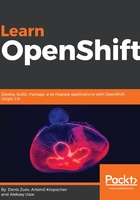
上QQ阅读APP看书,第一时间看更新
Linux containers
As mentioned in the previous section, Docker containers are secured and isolated from each other. In Linux, Docker containers use several standard features of the Linux kernel. This includes:
- Linux namespaces: It is a feature of Linux kernel to isolate resources from each other. This allows one set of Linux processes to see one group of resources while allowing another set of Linux processes to see a different group of resources. There are several kinds of namespaces in Linux: Mount (mnt), Process ID (PID), Network (net), User ID (user), Control group (cgroup), and Interprocess Communication (IPC). The kernel can place specific system resources that are normally visible to all processes into a namespace. Inside a namespace, a process can see resources associated with other processes in the same namespace. You can associate a process or a group of processes with their own namespace or, if using network namespaces, you can even move a network interface to a network namespace. For example, two processes in two different mounted namespaces may have different views of what the mounted root file system is. Each container can be associated with a specific set of namespaces, and these namespaces are used inside these containers only.
- Control groups (cgroups): These provide an effective mechanism for resource limitation. With cgroups, you can control and manage system resources per Linux process, increasing overall resource utilization efficiency. Cgroups allow Docker to control resource utilization per container.
- SELinux: Security Enhanced Linux (SELinux) is mandatory access control (MAC) used for granular system access, initially developed by the National Security Agency (NSA). It is an additional security layer for Debian and RHEL-based distributions like Red Hat Enterprise Linux, CentOS, and Fedora. Docker uses SELinux for two main reasons: host protection and to isolate containers from each other. Container processes run with limited access to the system resources using special SELinux rules.
The beauty of Docker is that it leverages the aforementioned low-level kernel technologies, but hides all complexity by providing an easy way to manage your containers.